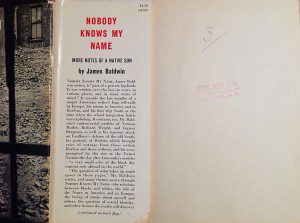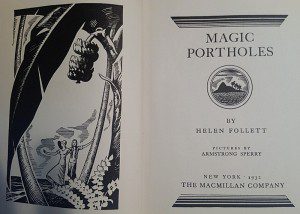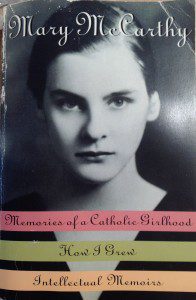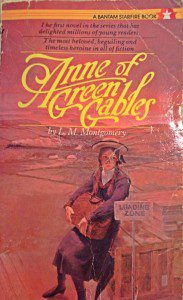
1. The people who fret over the Future of the Book talk about the loss of the tactile, of the physical act of holding the book. Me, the only thing I worry about is no longer having used books.
2. Not long after I graduated from hoarding old Sweet Valley High paperbacks, I bought a beat-up, mass-market paperback copy of Zen and the Art of Motorcycle Maintenance. I had little interest in reading it; I’m not sure I ever did. I bought it because inside the front cover was the stamp of “Shakespeare and Company, Paris.” I was only seventeen or so but I knew what that meant. It was from That Bookstore. I had to have it, though the cover was falling I kept it for years until it disappeared in a move. I like to think a mover kept it for himself. I can make peace with it finding that kind of home.
Years later, after I lost it, I learned that That Bookstore closed in 1941, long before Pirsig published Zen. (The one that now bears that name in That City does so as a tribute, and occupies a different adress.) Whatever hands it passed through were latecomer ones, impostors. I am not sure if that makes it better or worse.
 3. More recently, at the Strand, in the basement (the basement is truly the best part of the Strand, you have missed something if you don’t venture down there), I bought a copy of James Baldwin’s Nobody Knows My Name: More Notes of a Native Son. The dust jacket says it would have cost me $4.50, brand new, in 1961. Inside the front cover is the stamp of the “Negro Book Club.”
3. More recently, at the Strand, in the basement (the basement is truly the best part of the Strand, you have missed something if you don’t venture down there), I bought a copy of James Baldwin’s Nobody Knows My Name: More Notes of a Native Son. The dust jacket says it would have cost me $4.50, brand new, in 1961. Inside the front cover is the stamp of the “Negro Book Club.”
The Negro Book Club, as it turns out, was a subscription service started in Harlem in 1960. In 1963 the Times reported that the club had 4000 members. In August of 1961, when the second printing of my Baldwin book happened, it was probably smaller. The real push to publish books about black history, and black civil rights, only hits somewhere at the end of the decade. This book is a hardcover but later the appetite was for paperbacks, because they were “readily accessible for lower-income ghetto dwellers and for students,” Mel Watkins wrote. (He’d once sold books for them himself.)
 4. Abebooks provided me a first edition of Magic Portholes, by Helen Follett. It cost me about $10.00. You don’t know who Helen Follett is; that’s okay, you shouldn’t. She’s a travel writer from the 1930s who is connected to some research I’m doing for a book I’m hoping to publish someday. She worked with Armstrong Sperry on the illustrations of this book. Sperry was a famous children’s illustrator who drew one of the first images of Tarzan, and then went on to write his own Newbery Prize-winner, Call It Courage.
4. Abebooks provided me a first edition of Magic Portholes, by Helen Follett. It cost me about $10.00. You don’t know who Helen Follett is; that’s okay, you shouldn’t. She’s a travel writer from the 1930s who is connected to some research I’m doing for a book I’m hoping to publish someday. She worked with Armstrong Sperry on the illustrations of this book. Sperry was a famous children’s illustrator who drew one of the first images of Tarzan, and then went on to write his own Newbery Prize-winner, Call It Courage.
The illustrations in Magic Portholes are… of their time. The book is about the author’s trip to Barbados and Saint Lucia and eventually through the Panama canal. The illustrations are racialized in a way that makes me loath to read this book in public, in a way that I think we would try to erase if we republished the book today. But sometimes they are beautiful, too.
 5. I have an omnibus copy of Mary McCarthy’s memoirs, which were published as three separate books: Memories of a Catholic Girlhood; How I Grew; Intellectual Memoirs. In the general book-reading population, McCarthy’s been half-forgotten, though likely not so much by people like you and me, but she was popular enough in her own time that it was worth the while of the Quality Paperback Book Club to stitch this together. I do mean that word “stitch” literally. Each of the three books is typeset in a different font, and paginated as a separate book.
5. I have an omnibus copy of Mary McCarthy’s memoirs, which were published as three separate books: Memories of a Catholic Girlhood; How I Grew; Intellectual Memoirs. In the general book-reading population, McCarthy’s been half-forgotten, though likely not so much by people like you and me, but she was popular enough in her own time that it was worth the while of the Quality Paperback Book Club to stitch this together. I do mean that word “stitch” literally. Each of the three books is typeset in a different font, and paginated as a separate book.
It’s a garbage edition, in other words, not meant to last long. And yet I like it this way. It’s like someone could not bear the thought of one’s consuming these three books apart. And the cover image, of McCarthy as a Vassar co-ed: like a thing designed to insist that she, as Alison Lurie once put it, was “a totally new type of woman who stood for both sense [in the form of a hefty book] and sensibility [in the prettiness of the picture].”
 6. My copy of Anne of Green Gables, the one my dad read to me, is worn and fragile and the binding, a cheap 1980s mass market quality, is slowly going to dust. But it is the only copy that feels right to me. A friend has been bothering me to live up to my promise to acquire her daughter’s first copy but when I go into stores I can’t quite close the deal. Modern covers of this book are so garish. I’ll see one in a store and all get almost angry. They don’t look right. It sounds ridiculous but I have a near-religious conviction that Anne should be faded and worn. This book once was new but I never knew it that way, and it saddens me.
6. My copy of Anne of Green Gables, the one my dad read to me, is worn and fragile and the binding, a cheap 1980s mass market quality, is slowly going to dust. But it is the only copy that feels right to me. A friend has been bothering me to live up to my promise to acquire her daughter’s first copy but when I go into stores I can’t quite close the deal. Modern covers of this book are so garish. I’ll see one in a store and all get almost angry. They don’t look right. It sounds ridiculous but I have a near-religious conviction that Anne should be faded and worn. This book once was new but I never knew it that way, and it saddens me.
I have high hopes for where it will go. The only place I can picture handing it off is my deathbed, but perhaps it should, like all my other books, be bequeathed to a store.
If any still exist by then.
***
First image in this post via. The others are the author’s.




